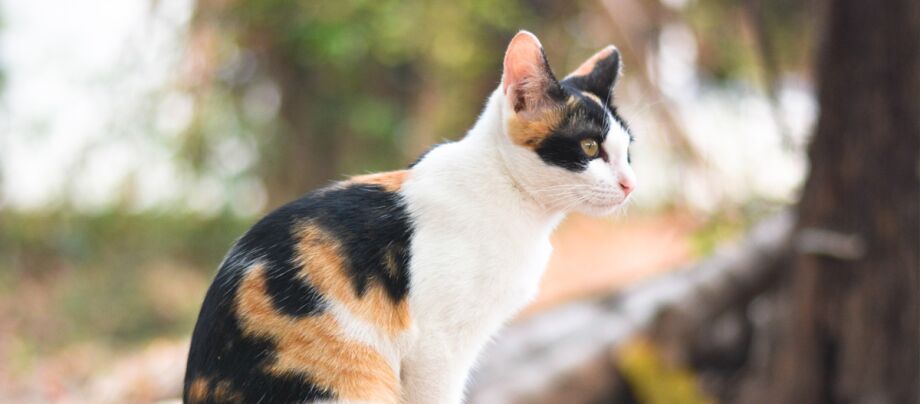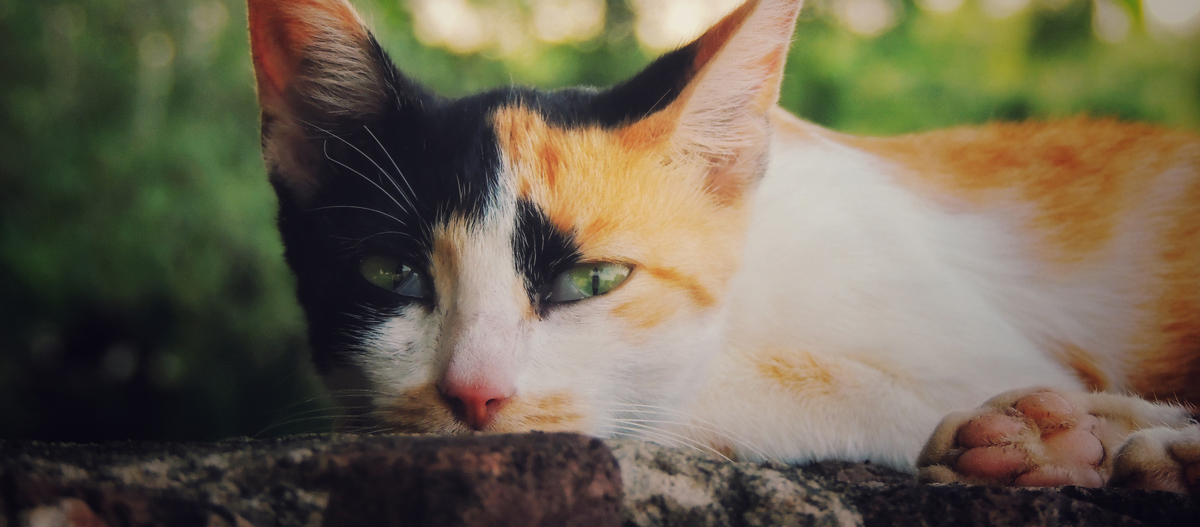Lucky cats enchant and fascinate with their spectacular appearance – regardless of which breed they belong to. In fact, contrary to popular belief, lucky cats are not an independent cat breed, but a special color. A naturally occurring yet the rare combination of genetic information results in an exceptionally colored coat. This is also unique to each animal like a fingerprint. Find out here what the lucky cats are all about.
What is special about lucky cats?
Lucky cats are the four-leaf clovers under the velvet paws: They are very rare. The mystical interpretation of the three colors in their fur, which are associated with certain things in many religions: black for death, red for life, and white for rebirth: the cycle of being, is likely to have shaped its reputation as a talisman.

Rare and at the same time symbolic people have always considered lucky – across cultures. For example, three-colored ship cats were particularly popular among seafarers, as their presence on board favored a safe journey, according to the firm belief. It is likely that lucky cats, possibly originating in Asia, spread around the world.
In 1893, in the legendary non-fiction book “Brehms Tierleben”, the author described the lucky cat as a “fire cat”. The popular belief says that it not only brings people luck but also protects them from fever and fire, says the book. In addition, Brehm continued, according to superstition, one could extinguish an existing fire by throwing the cat into it. You shouldn’t kill them intentionally, however, because that would inevitably cause permanent misfortune.
Whatever your opinion of the mystical side of the calico cat – it has been proven that they are animals that have always fascinated us, humans.
The colors of the lucky cat
As mentioned above, “lucky cat” is the colloquial term for a velvet paw whose fur combines three colors – always the combination of white, black, and red. If your kitty is drawn in white, gray, and black at home, for example, it does Don’t take that to the classic lucky cat.
The colorful velvet paw with a so-called “tortoiseshell” pattern plus white areas is given the title “lucky cat”. Inbreed standards, the pattern reminiscent of a tortoiseshell is often identified as “tortie”, derived from the English “tortoise” (turtle). In other places, one comes across alternative designations such as “tricolor” or “tortoiseshell with white”. The proportional weighting of the three colors is irrelevant for the lucky cat status.
Whatever you call them, tricolor tortoiseshell cats come in both the “full” variety and the corresponding “diluted” color nuances. Such an animal then has a white-blue-cream-colored fur. The tortoiseshell pattern can also appear in combination with a tabby pattern (mackerel, brindle, spotted, or “ticked”, which describes the banding of the individual hairs). In these cases, the expert speaks of a “Torbie” pattern.
How does the lucky cat fur pattern come about?
Of course, even in calico cats, coat color is ultimately a matter of genetics. To explain it in a very simplified way: The “color information” in cats is encoded on the X chromosome in the DNA. The cat has two of these, the tomcat one – his Y chromosome, therefore, has no influence on the fur color of the offspring. In these, different combinations of chromosomes are possible, namely a coincidence of one of the maternal X chromosomes with the X chromosome of the father or with the Y chromosome. In the latter case, the kitten is male and “inherits” the color from its mother. On the other hand, if X meets X, further constellations are possible. This is one of the reasons why there can be different colored kittens in a litter.
Of course, the genetics of color inheritance is governed by additional, more complex factors that affect, among other things, which colors “win out”. However, this simplified excursus should suffice to illustrate the system.

Back to the tortoiseshell cat: If, for example, a cat passes on the color information “black” via its X chromosome and this coincides with “red” from the tomcat’s X chromosome, these colors can manifest themselves on different parts of the body, since both are inherited dominantly. If then the hereditary disposition for “piebald” is added as an additional factor, the result would be a female lucky cat.
Incidentally, a more or less pronounced spotting is not a “color” in the true sense. Rather, the white areas of fur are the result of the failure or a restriction of those cells that produce the pigment melanin. So “white” means “absence of color”.